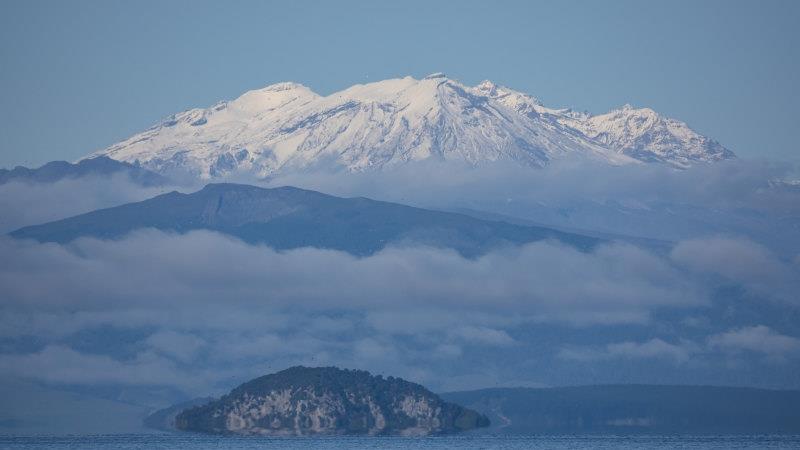Wellington: New Zealand scientists have increased the alert level for the volcano below the country’s biggest lake, which caused the largest eruption on earth in the past 5,000 years when it last exploded about 1,800 years ago.
In a statement, geological agency GeoNet said it had detected almost 700 small earthquakes below Lake Taupo, the caldera created by the giant volcano, and had raised the volcanic alert level to 1 from 0.
Mt Ngauruhoe and Mt Ruapehu view from Lake TaupoCredit:istock
The volcanic alert system is based on six escalating levels of unrest, but GeoNet notes that eruptions may occur at any level, and levels may not move in sequence as activity can change rapidly.
The Taupo volcano spewed more than 100 cubic kilometres of material into the atmosphere when it last erupted around 200 BC, devastating a large area of New Zealand’s central North Island in a period before human habitation. GeoNet says the eruption was the largest on the planet in the past 5,000 years.
GeoNet added this was the first time it had raised the Taupo Volcano alert level to 1, but this was not the first time there had been unrest and said the chance of an eruption remains very low.
Seismic activity recorded at Lake Taupo since January. There are almost 700 earthquakes shown.Credit:GNS
“The earthquakes and deformation could continue for the coming weeks or months,” it said.
New Zealand straddles the boundary between the Pacific and Australian tectonic plates and experiences significant volcanism and earthquakes.
In 2019, White Island, as known as Whakaari, suddenly erupted, spewing steam and ash, killing 22 people and seriously injuring 25, mostly tourists.
Reuters
Get a note directly from our foreign correspondents on what’s making headlines around the world. Sign up for the weekly What in the World newsletter here.
Most Viewed in World
Source: Read Full Article


